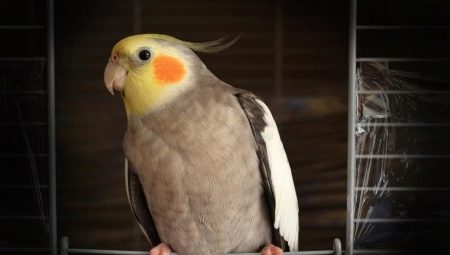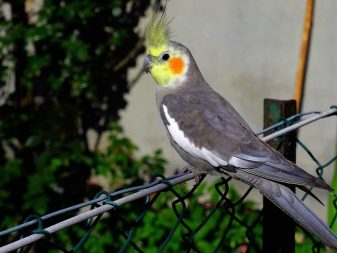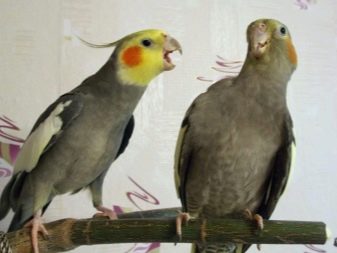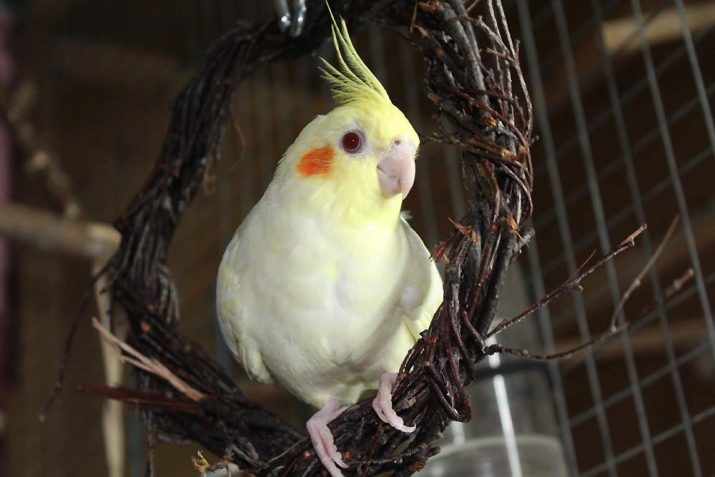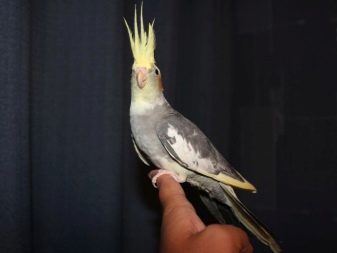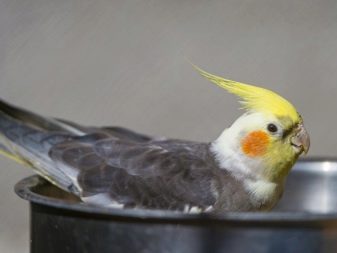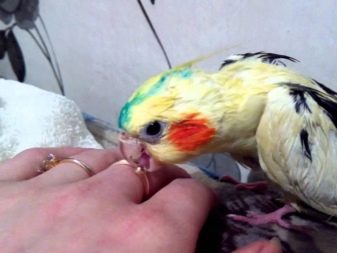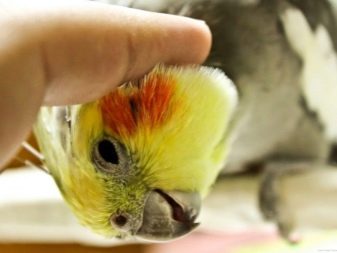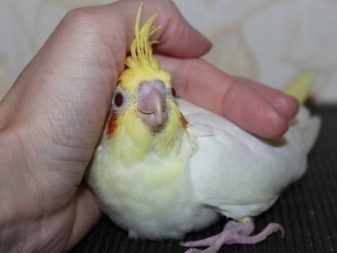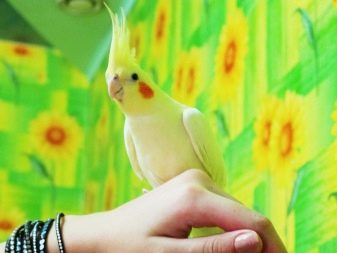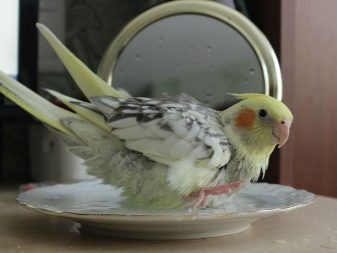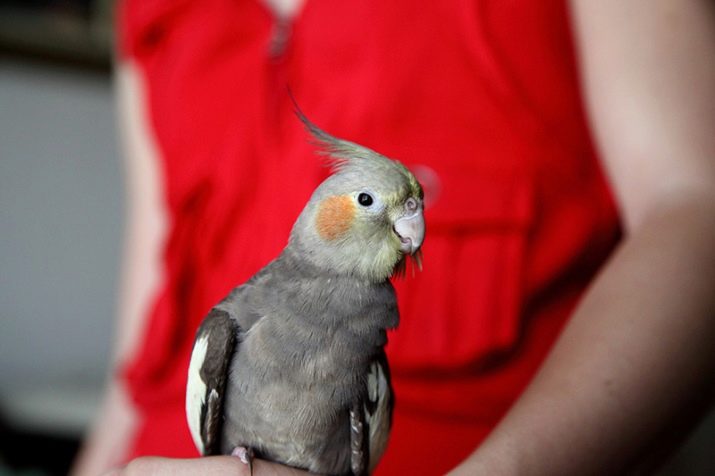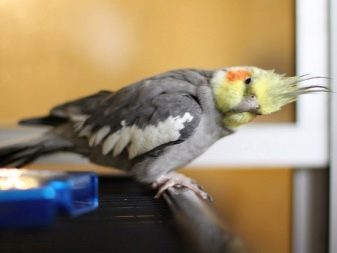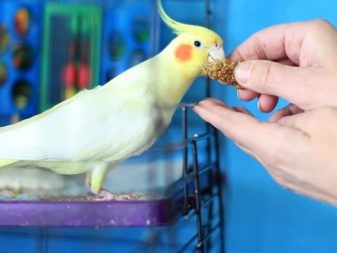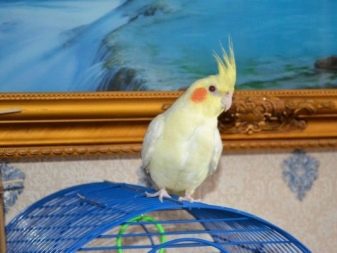Australian parrot Coral (nymph) is very well adapted and settled down in captivity. For its ability to reproduce, cheerful disposition and life expectancy up to 20-25 years, this species of parrot has become one of the most favorite among connoisseurs of exotic birds. Ornithologists, observing the life and habits of the bird, came to the conclusion that it is quite friendly, contact and inquisitive.
The nymph willingly makes contact with people and is able to imitate various sounds, including imitating the speech of a person. Assessing the abilities of a cockatiel parrot, scientists compare the level of development of the intelligence of this bird with the intellectual abilities of a child at the age of five. Parrots of this species quickly memorize new information and reproduce it with maximum accuracy.
Does Korela know how to talk?
In the wild, no parrot, of course, does not speak, but in captivity, having heard the sounds of human speech, the Corella can begin to repeat them. Among its hybrid congeners with a gray color, the red cheeky is best spoken. A nymph can imitate not only conversation, but also other sounds: whistling, dog barking, phone ringing tones, sound of a working vacuum cleaner, sounds of other birds.
Experienced Korella parrot breeders can even sing, expressing their joyful emotions. But in order to achieve this, a certain training was conducted with the parrot, without which he himself would have hardly started singing.
The word parrot imitates with high precision - so that you can understand them very well. The character of the sound at the same time will be quite loud, and at high sound ranges. This circumstance should always be taken into account when selecting words that you will teach the nymph, you should also avoid non-literary speech turns.
The essential point when choosing an individual for training is its friendly nature. If the pet is open for communication, willingly goes on hands, looks at you with interest - the chances of good results are high. If the parrot does not want to contact anyone, behaves wary, frightened, when trying to take it in hand, regards it as aggression to itself and begins to violently defend itself, then you will hardly be able to teach him to talk.
A parrot can memorize simple phrases, usually they are:
- "Hello";
- "go to sleep";
- "I will swim";
- "let's play";
- "good";
- “Give me a drink”;
- "I want to walk";
- "You have to go";
- "until";
- "I will eat";
- "how are you".
These and any other phrases can be combined with the name of a parrot and study them at the moment when the action denoted by this word is carried out. For example, the phrase “I will swim” must be said to the parrot at the moment when it is bathing in a tray with water. The word "hello" needs to be said when you see your bird in the morning or just enter the room. The word and the action create a strong associative link that improves the processes of memorization.
The talking parrot is, as a rule, a merit of its owner. Corella can memorize up to 35-40 words. The bird, of course, does not understand the meaning of the memorized words and repeats them mechanically, thoughtlessly. When in the process of learning the word was combined with the action or type of an object, and an associative connection was established, the parrot can reproduce the words supposedly “deliberately,” although in reality this is not so.
What age to start?
To begin to learn to talk Coral, you need to take into account the age of the pet.It is believed that The optimal age would be 2 or 3 months. Among all the litters, chicks for training choose those who, in addition to the chicken squeak, also emit other sounds - this is a clear sign of the good conversational abilities of the bird.
Practice shows that the easiest way to teach a boy is to talk - he remembers words and phrases well, and is disposed to learn. A girl can also talk, but she is not able to memorize many words and phrases. Although there are exceptions, when girls show the best results, compared with boys. In this matter, everything is very individual and unpredictable.
If you have bought an adult bird, it will be more difficult to train it, since it may not want to reproduce the speech of a person. Even if an already speaking individual came into your hands, this circumstance does not mean that the parrot will make friends with you to such an extent that it wants to learn.
The confidence of an adult bird with an established character and some associative links is extremely difficult and sometimes impossible to gain.
When you bring the cockatiel to your home, she will experience the stress of changing her habitat. Give her a few days to look around, get used to you and your home, to those who live in it. During the adaptation period, do not try to establish contact, the best of all, unless you start disturbing the parrot at this difficult time for it. A few days later, you can start talking with your pet, turning to him in a quiet and gentle voice. It is important to be interested in Coralia to communicate, arrange and accustom him to him. But all this is done gradually, methodically, and with kindness.
After some time after adaptation, you can open the cage and invite the parrot to sit on your arm. Gradually accustoming the bird to be near you outside the cage, you establish a good strong connection with it, it is this kind of interaction between you that is necessary in order to proceed to the training of speaking.
A parrot who is to be trained should have only one owner - a bird will play with it, communicate, take food and care. It has been noticed that the female timbre of the voice of the parrot is closer and more understandable than the male one, so study is more successful if there is a woman as a teacher.
To accustom a bird to the reproduction of human speech should be subject to certain rules, which should be strictly followed:
- it is necessary to begin training only at the moment when the bird feels well, is cheerful and active - usually in Corella it happens in the morning and in the evening;
- the learning process should be a daily event, the duration of the lesson should be at least 20 minutes, classes should be held 2-3 times a day;
- the first words, and then the phrases, should be short and simple in sound set;
- the bird remembers well the words that are associated with something pleasant for her: feeding, bathing, morning awakening, walking with the exit from the cage;
- All successes of your pet should always be encouraged with praise and dainty;
- if the bird is sick or has a bad mood and no desire to communicate, it is not necessary to force it to learn at this time;
- for the parrot to remember the words, they need to be repeated to him constantly, with the same intonation, many times, every day;
- New words and phrases should be learned only when your pet has well remembered the previous material;
- do not overload the memory of the bird; a large volume of words is beyond its power;
- Be patient while learning - do not be nervous and do not yell at the bird if you do not want to lose friendly contact with it.
Connoisseurs who breed Corella parrots and teach them to speak, argue that if, after several months of training, your bird did not speak, it means that you taught the girl. Females have many virtues, they can be taught various game tricks, but not everyone can be taught to speak and not always.
How to quickly teach at home?
It is much easier to teach Coralla to repeat words when he is alone with you. It is required to exclude any extraneous sounds, flashes of light, noise, extraneous smells. - remove from the room bright and moving objects, mirrors, other animals, children. The bird is very curious and will be constantly distracted by any, even insignificant stimuli.
In the case when several Corals live in the same cage, then during the lessons the parrots are seated in different rooms for the greatest concentration of the bird’s attention on you and the words you utter. Parrots living in a pair can also be trained. Since it is more difficult to train the female, the male is usually subject to training. Male for the time of the lesson is also transferred to a separate room from the female.
In order for your pet to want to learn how to talk, it must have proper care, the optimal content of vitamins and minerals in the diet, the absence of diseases, molting. An active, healthy and curious bird should not be afraid of contact with you and willingly allow yourself to be carried. If you see your parrot flapping its wings and making clicks with its beak, this is a sure sign that he is now in a good mood and the moment to study is now the most suitable.
Repeatedly pronouncing phrases or separate words to the parrot, pay attention to how the bird behaves.
If you notice that the Corella is carefully looking at you and slowly closes and opens the eyelids, this means that the pet has all the attention and is trying to remember what is happening around it now.
Some Corella owners are trying to conduct a test session to find out if their parrot is capable of learning and memorizing words. To do this, during the day, a bird with the same intonation repeat a simple and short word in an amount not less than 50 times (the more, the better).
It is believed that you need to start school by voicing the name of a parrot, for example, telling him: "Kesha" or "Kesha is good." If in the process of learning, a coral girl shows signs of interest and tries to repeat what she has learned aloud by the end of the lesson, then there is a sense for further study. However, one day to judge the ability to learn is still not worth it. The natural intellectual capabilities of each parrot can be different, and one who did not speak in 1 day can give excellent results after several full-fledged exercises.
Every day, repeating the same phrase several dozen times is quite a tedious task for any person. If you do not have the time and opportunity to conduct regular voice lessons with a parrot on your own, in this case, a smartphone or a computer can help you. To do this, you need to record a voice file and put it on multiple replay. The bird is left in the room, where during the day it repeatedly listens to the audio recording. Thus, the parrot remembers a new word or phrase and can reproduce the learned lesson.
It is believed that this training method can be resorted to in the case when your pet already knows at least one word.
In addition to words, the parrot can learn to whistle. The whistling Corella mimics best of all, but it doesn’t reproduce it quite clearly. A parrot can be taught to imitate a musical melody; for this you need to whistle it in the presence of a bird quite often so that it can remember and reproduce what it hears so often. A parrot that reproduces a melody, as a rule, is in a good mood and thus expresses its joyful emotions. Particularly expressive parrot can play tunes during the breeding season, showing off in front of the female.
In addition to singing, the male can also make movements resembling priplyasyvanie - this is a very interesting and fun sight.
Talking parrot Coral is always the owner's pride, because behind every word learned there is a big and painstaking work, in which time and patience are invested. Those breeders who teach their parrots to imitate speech, believe that the lessons taught with the bird are a pleasant pastime during which they communicate and play with their beloved pet.
For some of the secrets of learning Coral Colloquial, see the video below.
